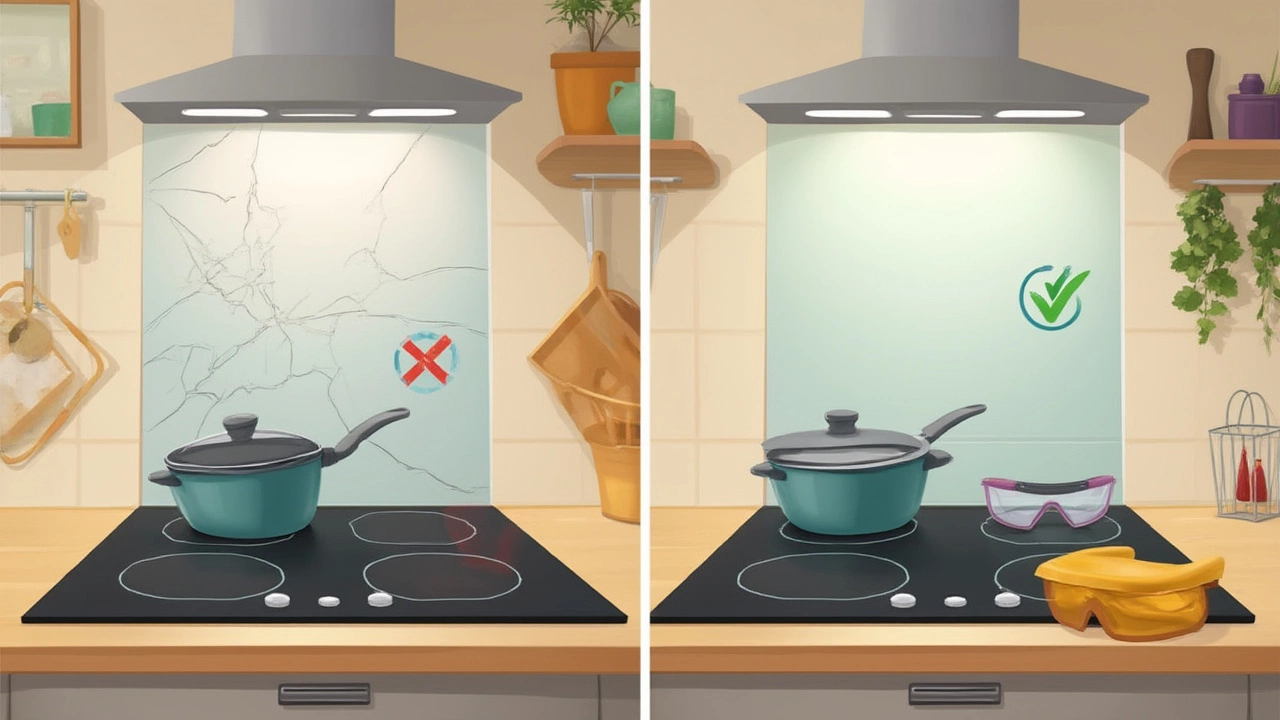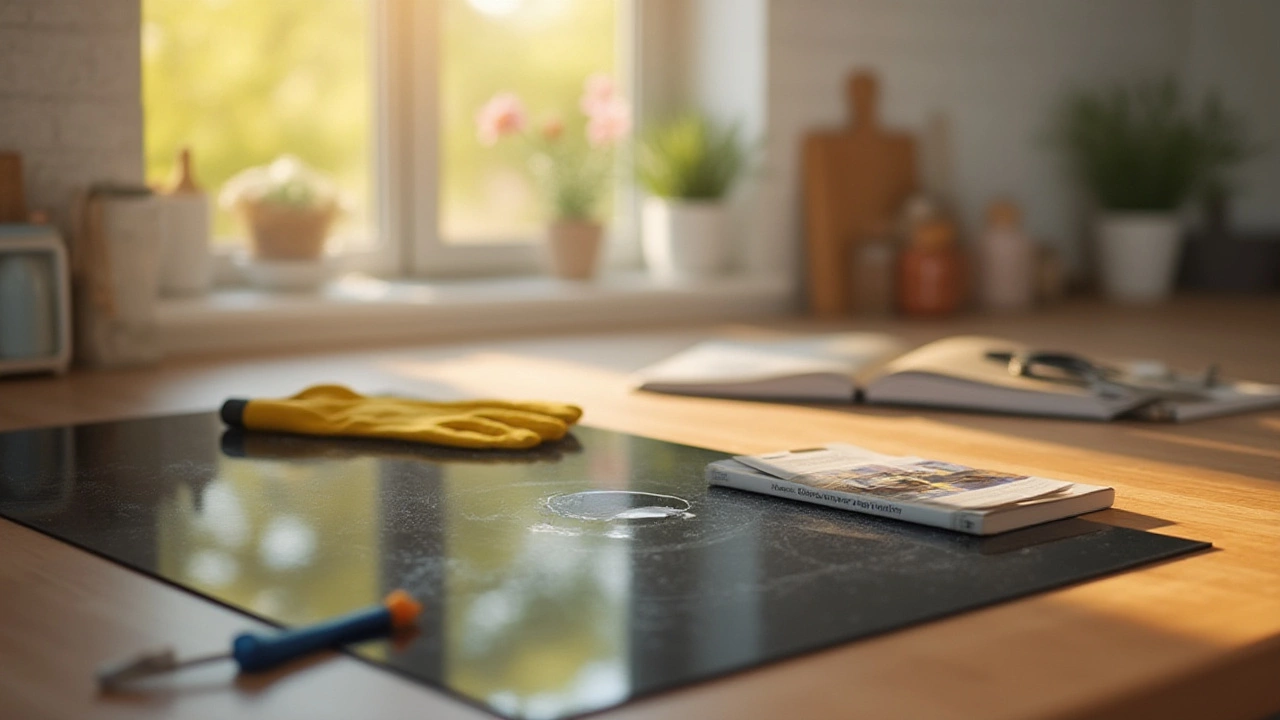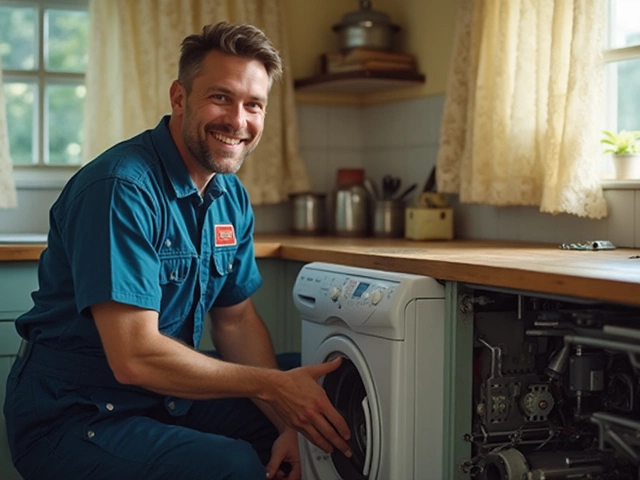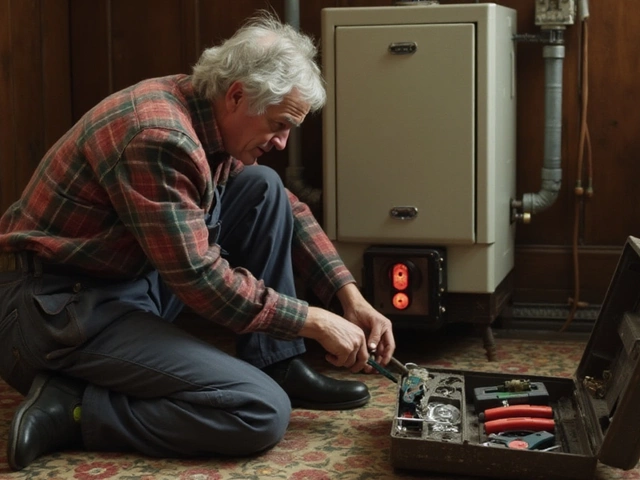Ever heard that sickening ‘crack’ right in the middle of making dinner, only to spot a chip or a hairline fracture zigzagging across your once-pristine glass hob? If so, you know that sinking feeling. Glass hobs—whether ceramic or induction—bring that lush, modern shine to your kitchen, but when things go wrong, most folks are left scratching their heads. Can you actually fix a cracked or shattered hob, or is it straight for the skip?
There’s a ton of misguided advice out there—some say you can patch it up with glue, while others claim you might as well remortgage your house for a new one. So, what’s the real story if your glass hob gets damaged? Roll up your sleeves as we go into what’s possible, what’s safe, and what just isn’t worth trying.
Understanding Glass Hobs: What Breaks and Why?
Glass hobs aren’t made of regular glass. Whether you’re looking at an electric ceramic hob or an induction hob, the cooking surface is special. It's a type of tempered glass, also called toughened glass, designed to handle high direct heat, support heavy pans, and take a few accidental knocks. Tempered glass is about four to five times stronger than your windowpane glass, and when it breaks, it crumbles into blunt granules rather than lethal shards.
But despite its strength, glass hobs have weak spots. Their biggest enemies? Heavy, sudden impact (think a dropped cast iron pan), rapid temperature swings (like splashing cold water onto hot glass), and, surprisingly, regular old wear and tear over time. Even a poorly fitted hob can crack if the worktop flexes underneath. Dish out enough punishment, or just enough bad luck, and a crack or chip appears. Sometimes you’ll only notice a faint scratch at first, but under repeated heat cycles, those scratches can blossom into full-blown cracks.
If you want the hard numbers, appliance manufacturers like Bosch and Neff say that physical damage is the leading cause of hob failures, way ahead of wiring faults or control board issues. It’s not uncommon for modern glass hobs to last over ten years with careful use, but just one kitchen misfire can leave a break you can’t ignore.
Is Glass Hob Repair Really Possible?
This is the million-pound question. Let's tear off the plaster: you can’t “repair” a cracked or shattered glass hob in the way you might glue back a teacup handle. Unlike a chipped wall tile, glass hobs can’t be patched, epoxied, or glued for safe continued use. Why? Because the integrity of tempered glass is key for both your safety and the hob’s function. Any repair—including homebrew fixes with super glue or epoxy resin—is a no-go. Heat from the element can expand a crack, cause the patch to melt, or just plain shatter everything mid-cook. That’s not a risk you want to take with something that gets smoking-hot.
Here’s the catch—minor scratches that don’t go deep (think cosmetic marks, not chips or cracks) don’t affect use. Some people use specialty hob cleaning creams to buff these out and keep things shiny; deeper grooves, though, weaken the glass. If you spot a crack, even if it’s “just a hair,” the advice from every major appliance brand is the same: stop using the hob straight away and don’t even risk testing a single ring.
What about home insurance? Well, accidental damage coverage might have your back, but don’t expect it with standard policies. Statistically, fewer than 7% of appliance insurance claims in the UK involve damaged glass hobs, likely due to strict policy wording about “accidental damage” vs. “wear and tear.” Better to check your policy or give them a call before you pay out for a replacement.

When Can You Replace Just the Glass?
Here’s where things get brighter. For most brands, you can buy a replacement glass panel for your specific hob model. The glass is precision-cut and toughened for each unit, so it’s not a universal part, but most major manufacturers offer direct replacements. Fitting a new glass top is a skilled job, but it costs less—usually between £80 and £200 for the part, depending on make and model. Labor can add £60–£120, so you could be looking at £200–£300 for a proper fix, which is often much cheaper than buying a whole new hob.
If you’re handy, there are guides for DIY replacement, but be warned—it’s not exactly like changing a light bulb. You need to safely isolate the hob from the power or gas supply, carefully unclip the old glass, disconnect the touch controls or dials, and clip the new one in, making sure seals are good and nothing gets pinched or left loose. Miss a connection or pinch a wire, and you risk electrical faults, constant beeping, or worse. If you’re not confident with electrics, best to call in a qualified repair technician.
Here’s a quick look at what a typical glass hob replacement might cost for popular UK and EU brands:
| Brand | Replacement Glass Price (GBP) | Average Labor Cost (GBP) | Total Estimated Cost (GBP) |
|---|---|---|---|
| Siemens | £160 | £100 | £260 |
| Neff | £120 | £90 | £210 |
| Bosch | £100 | £80 | £180 |
| Hotpoint | £80 | £60 | £140 |
| Aeg/Electrolux | £130 | £70 | £200 |
If your glass hob repair ends up costing nearly as much as a brand-new hob (usually upwards of £300 for a decent induction), it might be smarter to replace the whole thing for fresh warranty cover and better energy efficiency.
Glass Hob Repair Tips, Prevention and When to Call for Help
If you want your glass hob to last its full lifespan, keep it clean and don’t treat it like a chopping board or landing spot for cast iron pans. Hob-specific cleaning creams that contain fine abrasives (like Hob Brite or Astonish) can help keep things looking fresh without scratching the surface. Wipe up sugar spills straight away—boiling sugar can actually pit or even fuse into the glass and cause microscopic cracks later.
If you need to replace the glass, grab your hob’s model and serial number (usually on a sticker under the hob or in the user manual) before you call service or order parts. That’ll make the process go faster. And remember, it’s never worth risking a home-brew fix with glue or tape; both the risk of electrical shock and the chance of a glass explosion are real.
What about recurring problems not related to drops or accidents? Frequent cracks can also be a sign of installation problems. If your kitchen worktop flexes when you press down by the hob—maybe there’s no sufficient bracing or the cutout is too loose—it’s time to shore things up before installing a replacement. Some people mount glass hobs with a bead of oven-safe silicone around the edge to “float” the glass, reducing pressure points.
- Always read the hob manual for safe cleaning products and scratch warnings.
- Don’t cook on a cracked hob—stop using it straight away.
- Regularly inspect for tiny cracks around the edges, especially if you have children flinging pans around.
- For chips or corner breaks, some insurance policies may cover you—always check before coughing up cash for a replacement.
- If the hob surface is broken right through, replace the glass or the unit as soon as possible.
The bottom line? If it’s just scratches, a glass polish might help. Chips and cracks mean it’s time for a replacement, not a DIY patch. And remember—glass hobs look slick and modern, but they need the same respect as any tool in your kitchen arsenal. Treat them right, react fast if things go wrong, and you’ll avoid the scary cost of a whole new setup next time something goes bump during dinner prep.







